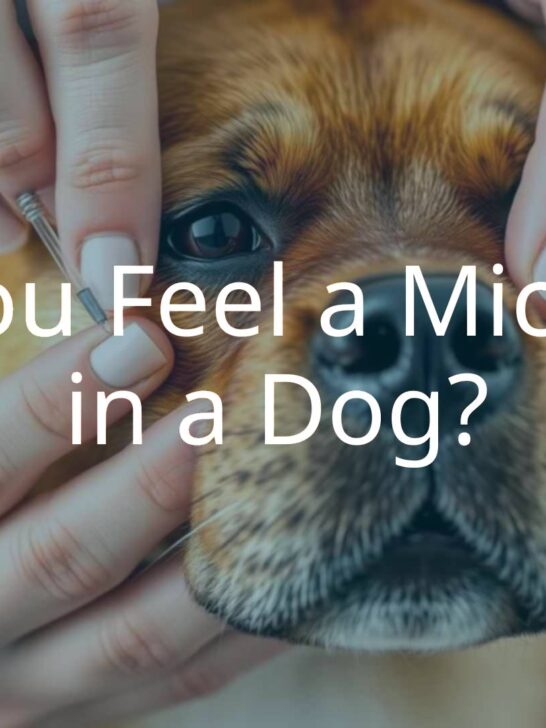Shaking Puppy Syndrome – Causes, Symptoms, and Treatment
Puppies’ bodies can shake for many reasons, from excitement to pain, nausea, or fever.
While the reason could be temporary and harmless, if you’ve brought a new puppy home and see your puppy shaking or even having regular shaking episodes, it may be a cause for concern.
Specifically, the shaking can be a result of shaking puppy syndrome, which can cause tremors, poor muscle control, and even seizures in young dogs.
In this guide, we’ve provided the information you need on shaking puppy syndrome, including what it is, its causes and symptoms, and how puppies with the syndrome are diagnosed and treated.
What Is Shaking Puppy Syndrome?

Shaking puppy syndrome (SPS), also known as canine hypomyelination, is a genetic medical condition that is seen in very young dogs.
SPS is characterized by tremors throughout the affected puppy’s entire body.
Myelin is the white fatty sheath that covers and protects all nerve cells in the body.
Myelin allows electrical impulses to move between nerves and the brain and spinal cord.
With hypomyelination, this protective layer is too thin, and electrical impulses can get lost, causing the puppy to lose fine muscle control.
Puppies affected by this syndrome may seem normal at birth, but the symptoms will appear while they’re still very young, sometimes as early as two weeks.
Causes

Shaking puppy syndrome is an inherited defect that is seen in many dog breeds.
Some breeds that are likely to develop shaking puppy syndrome are:
- Springer spaniels
- Welsh springer spaniels
- Golden retrievers
- Weimaraners
- Australian silky terriers
- Catahoula curs
- Dalmatians
- Chow chows
- Bernese mountain dogs
Other breeds and mixed breeds can also develop this syndrome, but parents must have the gene to pass it on to the puppy, and some dogs are asymptomatic carriers of the gene.
Though SPS shows up in multiple breeds, the syndrome’s expression differs between dog breeds, affecting either the central nervous system or the peripheral nervous system.
In Weimaraners, the condition is caused by the abnormal development of cells responsible for producing myelin in the central nervous system.
The symptoms of the affected dog reduce with age.
Meanwhile, shaking puppy syndrome in golden retrievers affects the peripheral nervous system.
Severely affected puppies of this breed will experience all the other symptoms of the syndrome without any shaking episodes.
For golden retrievers, symptoms develop when they are about five to seven weeks old.
Unfortunately, the genetic mutation has much more devastating results in springer spaniels, as the symptoms are progressive and can culminate in seizures and death.
Male springer spaniel puppies are more prone to suffer from shaking puppy syndrome.
While female springer spaniel puppies recover from this disorder after some time, males typically do not.
Often, they will die by the time they are six months of age, whether because the condition becomes more severe over time, or the breeder or pet owner chooses euthanasia due to the severity of the tremors.
Symptoms

Most puppies with shaking puppy syndrome will show clinical signs and symptoms when they are two weeks old or as they begin walking.
The shaking starts around this time, and mild hind leg tremors are seen.
Aside from tremors in the hind legs, the other signs and symptoms of this condition are:
- Head tremors
- Poor muscle tone
- Uncoordinated gait
- Lack of coordination and balance
- Poor reflexes
- Smaller size than other puppies in the litter
- Inability to gain weight
- In severe cases, difficulty while nursing
Often, excitement or exercise makes the shaking episodes more severe.
The shaking may become stronger while eating; the tremors will reduce significantly when the puppy is resting, though.
Note that affected puppies and adult dogs should be fed alone and away from other puppies, as other animals may push them around and not let them eat.
Affected puppies also usually need assistance when eating puppy food or drinking water.
They may even require hand feeding to ensure they get food or water in their system.
Diagnosis and Treatment

If you suspect your dog has shaking puppy syndrome, you should take it to the vet to make sure.
A veterinarian will diagnose a puppy’s shaking puppy syndrome by ruling out all other possibilities, including kidney disease, liver disease, canine distemper, etc.
To do this, the vet will perform a thorough physical examination and ask about your pet’s detailed history, including its pedigree.
The examination may include a neurological exam to check if your puppy’s cranial nerves or spinal cord are damaged.
They may analyze radiographs of your puppy’s chest and back to look for tumors or other kinds of damage to its skeletal system and collect a sample of the fluid surrounding the spinal cord to study it.
They will likely also perform multiple blood tests to rule out imbalances in organ function and check for any toxicities that may be causing the symptoms.
If shaking puppy syndrome is confirmed, the vet may run further tests to analyze the genetic mutation that caused the syndrome.
Sadly, canine hypomyelination does not have any actual treatment.
However, the vet may prescribe certain medications to control or reduce the symptoms and provide professional veterinary advice on keeping your pup safe and comfortable.
Most puppies with shaking puppy syndrome recover over time and are normal by the time they are one to two years old.
Puppies that are less severely affected may even stop shaking by three to four months and enjoy normal lifespans.
However, many adult dogs who continue to live with the disorder will have mild hind leg tremors throughout their lives.
Conclusion
Caring for a puppy with shaking puppy syndrome can be very alarming, especially if you’re not aware of what is causing the tremors.
We hope that this guide has given you the answers you need and helped you understand more about the journey ahead for you and your dog.
Resources:



















